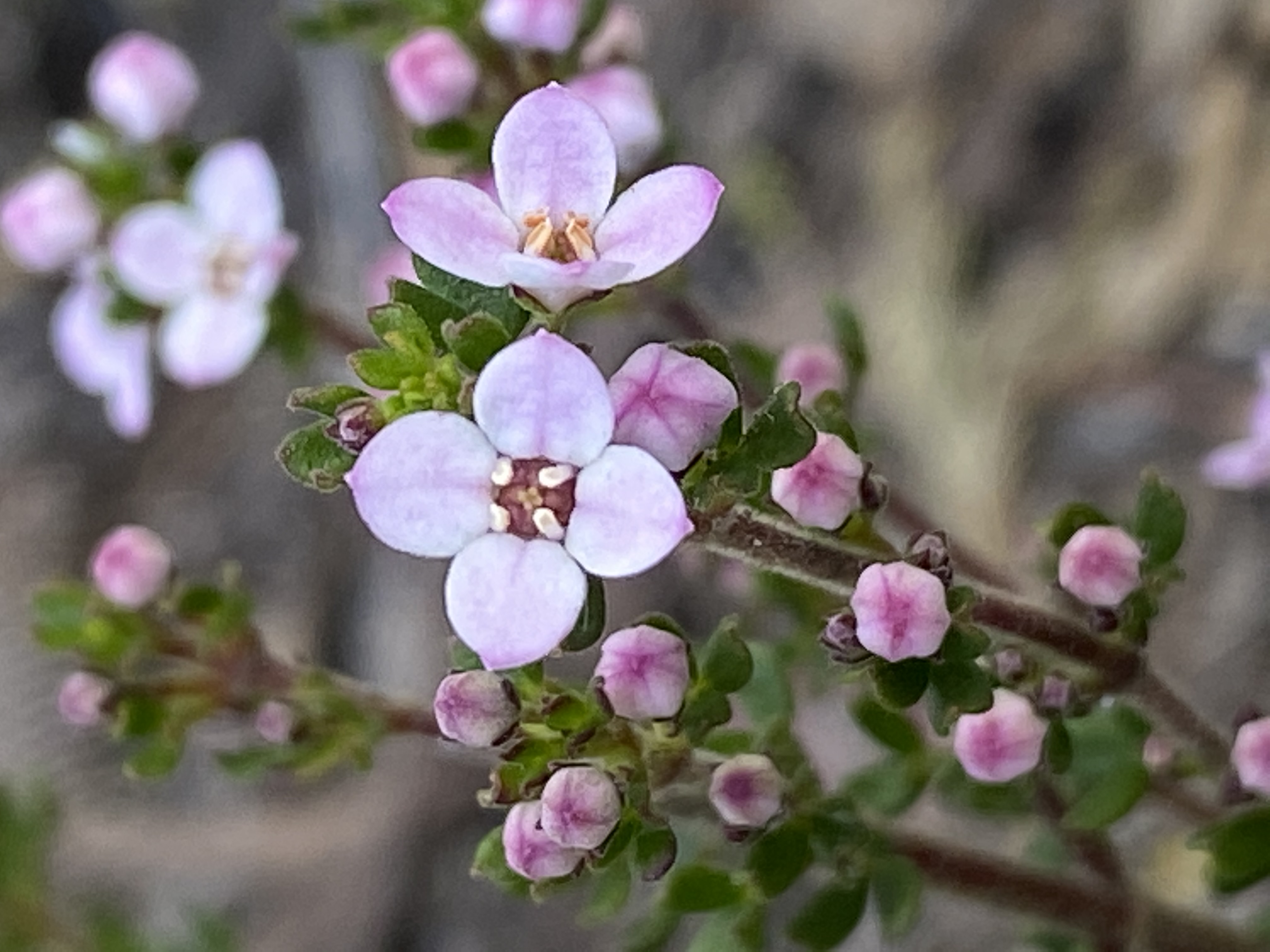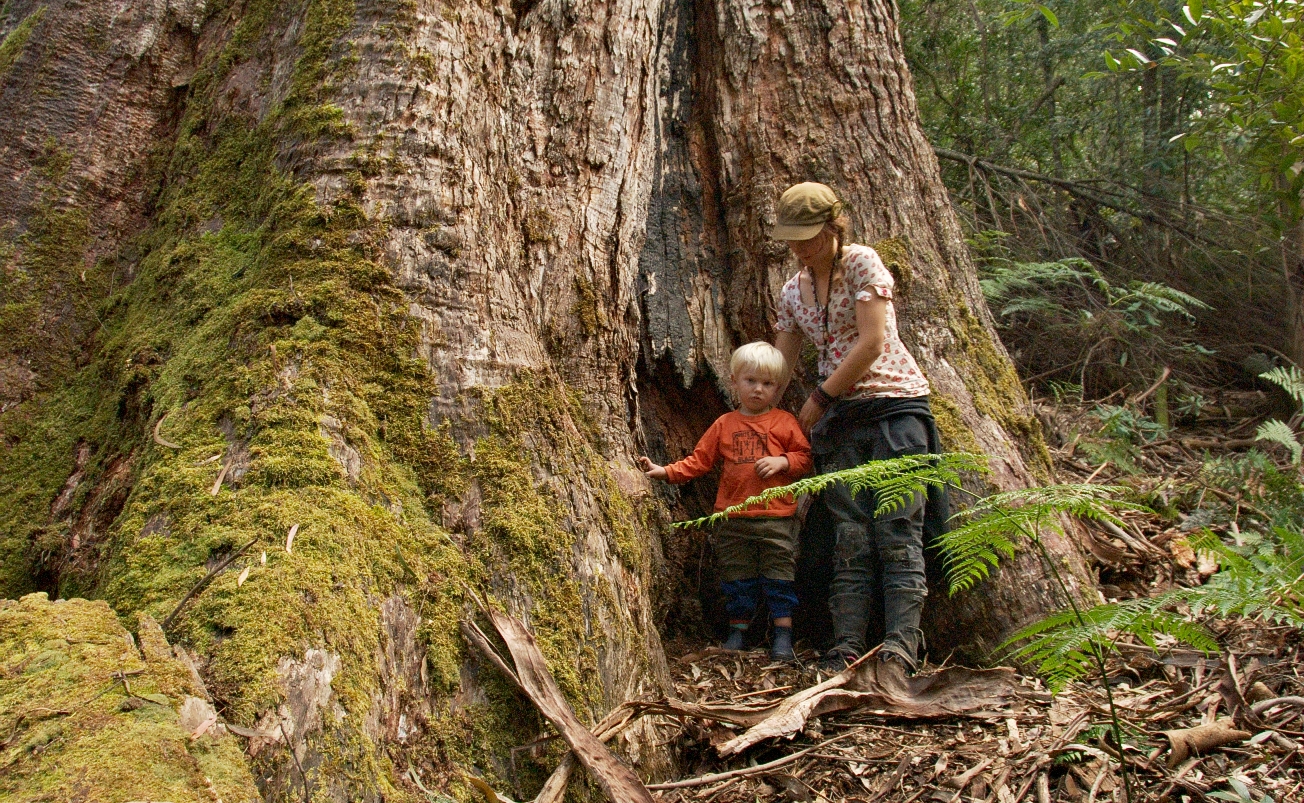|
Zieria Citriodora
''Zieria citriodora'', commonly known as lemon-scented zieria, is a species of flowering plant in the citrus family Rutaceae and is endemic to a small area near the border between New South Wales and Victoria. It is a small shrub with lemon-scented leaves and small, pale pink or white flowers which appear from late winter to summer. Description ''Zieria citriodora'' is a low or rounded shrub which grows to high and wide and which often grows from rhizomes. Its branches are dotted with oil glands and covered with short, soft hairs, often becoming glabrous with age. The leaves are composed of three leaflets with the central one linear or lance-shaped, long and wide with a petiole long. Each leaflet is dotted with oil glands, has a covering of short, soft hairs and has its edges more or less rolled under. The leaves are strongly lemon-scented when crushed. The flowers are arranged singly or in groups of up to three in leaf axils, the groups usually much longer than the ... [...More Info...] [...Related Items...] OR: [Wikipedia] [Google] [Baidu] |
Royal Botanic Gardens, Melbourne
Royal Botanic Gardens Victoria are botanic gardens across two sites–Melbourne and Cranbourne. Melbourne Gardens was founded in 1846 when land was reserved on the south side of the Yarra River for a new botanic garden. It extends across that slope to the river with trees, garden beds, lakes and lawns. It displays almost 50,000 individual plants representing 8,500 different species. These are displayed in 30 living plant collections. Cranbourne Gardens was established in 1970 when land was acquired by the Gardens on Melbourne's south-eastern urban fringe for the purpose of establishing a garden dedicated to Australian plants. A generally wild site that is significant for biodiversity conservation, it opened to the public in 1989. On the site, visitors can explore native bushland, heathlands, wetlands and woodlands. One of the features of Cranbourne is the Australian Garden, which celebrates Australian landscapes and flora through the display of approximately 170,000 plan ... [...More Info...] [...Related Items...] OR: [Wikipedia] [Google] [Baidu] |
Australian Systematic Botany
''Australian Systematic Botany'' is an international peer-reviewed scientific journal published by CSIRO Publishing. It is devoted to publishing original research, and sometimes review articles, on topics related to systematic botany, such as biogeography, taxonomy and evolution. The journal is broad in scope, covering all plant, algal and fungal groups, including fossils. First published in 1978 as ''Brunonia'', the journal adopted its current name in 1988. The current editor-in-chief is Daniel Murphy ( Royal Botanic Gardens Melbourne). Abstracting and indexing The journal is abstracted and indexed in BIOSIS, CAB Abstracts, Current Contents (Agriculture, Biology & Environmental Sciences), Elsevier BIOBASE, Kew Index, Science Citation Index and Scopus. Impact factor According to the ''Journal Citation Reports'', the journal has a 2015 impact factor of 0.648. References External links * Australian Systematic Botanyat SCImago Journal Rank Australian Systematic Botan ... [...More Info...] [...Related Items...] OR: [Wikipedia] [Google] [Baidu] |
Sapindales Of Australia
Sapindales is an order of flowering plants. Well-known members of Sapindales include citrus; maples, horse-chestnuts, lychees and rambutans; mangos and cashews; frankincense and myrrh; mahogany and neem. The APG III system of 2009 includes it in the clade malvids (in rosids, in eudicots) with the following nine families: *Anacardiaceae *Biebersteiniaceae *Burseraceae *Kirkiaceae *Meliaceae *Nitrariaceae (including Peganaceae and Tetradiclidaceae) *Rutaceae *Sapindaceae *Simaroubaceae The APG II system of 2003 allowed the optional segregation of families now included in the Nitrariaceae. In the classification system of Dahlgren the Rutaceae were placed in the order Rutales, in the superorder Rutiflorae (also called Rutanae). The Cronquist system of 1981 used a somewhat different circumscription, including the following families: *Staphyleaceae *Melianthaceae * Bretschneideraceae *Akaniaceae *Sapindaceae *Hippocastanaceae *Aceraceae *Burseraceae *Anacardiaceae *Julianiaceae ... [...More Info...] [...Related Items...] OR: [Wikipedia] [Google] [Baidu] |
Zieria
''Zieria'' is a genus of plants in the family, Rutaceae. About sixty species have been formally described, all of which are endemic to Australia except for one species which is found in New Caledonia. They occur in all Australian states except Western Australia but the genus is under review and a number of species are yet to be described or the description published. Zierias are similar to the better known genus ''Boronia'' but can be distinguished by the number of stamens in the flowers. The name ''Zieria'' honours the Polish botanist John Zier. Description Plants in the genus ''Zieria'' are shrubs or small trees. The leaves are arranged in opposite pairs and are usually compound with three leaflets similar in shape but the middle leaflet slightly larger. The flowers are arranged in groups in the leaf axils and have four fused sepals and four petals alternating with the sepals. There are four stamens (eight in ''Boronia'') and four carpels with their styles fused. The fruit h ... [...More Info...] [...Related Items...] OR: [Wikipedia] [Google] [Baidu] |
Cutting (plant)
A plant cutting is a piece of a plant that is used in horticulture for vegetative (asexual) propagation. A piece of the stem or root of the source plant is placed in a suitable medium such as moist soil. If the conditions are suitable, the plant piece will begin to grow as a new plant independent of the parent, a process known as striking. A stem cutting produces new roots, and a root cutting produces new stems. Some plants can be grown from leaf pieces, called leaf cuttings, which produce both stems and roots. The scions used in grafting are also called cuttings. Propagating plants from cuttings is an ancient form of cloning. There are several advantages of cuttings, mainly that the produced offspring are practically clones of their parent plants. If a plant has favorable traits, it can continue to pass down its advantageous genetic information to its offspring. This is especially economically advantageous as it allows commercial growers to clone a certain plant to ensure consis ... [...More Info...] [...Related Items...] OR: [Wikipedia] [Google] [Baidu] |
Environment Protection And Biodiversity Conservation Act 1999
The ''Environment Protection and Biodiversity Conservation Act 1999'' (Cth) is an Act of the Parliament of Australia that provides a framework for protection of the Australian environment, including its biodiversity and its natural and culturally significant places. Enacted on 17 July 2000, it established a range of processes to help protect and promote the recovery of threatened species and ecological communities, and preserve significant places from decline. The Act is administered by the Department of Agriculture, Water and the Environment. Lists of threatened species are drawn up under the Act, and these lists, the primary reference to threatened species in Australia, are available online through the Species Profile and Threats Database (SPRAT). As an Act of the Australian Parliament, it relies for its constitutional validity upon the legislative powers of the Parliament granted by the Australian Constitution, and key provisions of the Act are largely based on a number ... [...More Info...] [...Related Items...] OR: [Wikipedia] [Google] [Baidu] |
Omeo
Omeo ( ) is a town in Victoria (Australia), Victoria, Australia on the Great Alpine Road, east of Mount Hotham, in the Shire of East Gippsland. At the 2016 Australian census, 2016 census, Omeo had a population of 406. The name is derived from an Indigenous Australians, Aboriginal word for 'mountains' or 'hills'. Omeo is affectionately known as the City of the Alps with many historic buildings remaining in the town. The town is still the commercial hub for the Omeo Region and is a service centre for outlying communities such as Benambra, Victoria, Benambra, Cobungra, Victoria, Cobungra, Cassilis, Victoria, Cassilis, Swifts Creek, and Ensay, Victoria, Ensay. History The first reported sighting by Europeans of the wide plain that the Aborigines called 'Omeo' was by the naturalist John Lhotsky from the southern Alps in 1834. The area was first visited by Stockman (Australia), stockmen who drove stock through the region as early as 1835. In 1845 gold was found in the Livingstone Cre ... [...More Info...] [...Related Items...] OR: [Wikipedia] [Google] [Baidu] |
Alpine National Park
The Alpine National Park is a national park located in the Central Highlands and Alpine regions of Victoria, Australia. The national park is located northeast of Melbourne. It is the largest National Park in Victoria, and covers much of the higher areas of the Great Dividing Range in Victoria, including Victoria's highest point, Mount Bogong at and the associated subalpine woodland and grassland of the Bogong High Plains. The park's north-eastern boundary is along the border with New South Wales, where it abuts the Kosciuszko National Park. On 7 November 2008 the Alpine National Park was added to the Australian National Heritage List as one of eleven areas constituting the Australian Alps National Parks and Reserves. Ecology Ecologically, Alpine refers to areas where the environment is such that trees are unable to grow and vegetation is restricted to dwarfed shrubs, alpine grasses and ground-hugging herbs. In Victoria this is roughly those areas above . Below this is the ... [...More Info...] [...Related Items...] OR: [Wikipedia] [Google] [Baidu] |
IBRA
The Interim Biogeographic Regionalisation for Australia (IBRA) is a biogeographic regionalisation of Australia developed by the Australian government's Department of Sustainability, Environment, Water, Population, and Communities. It was developed for use as a planning tool, for example for the establishment of a national reserve system. The first version of IBRA was developed in 1993–94 and published in 1995. Within the broadest scale, Australia is a major part of the Australasia biogeographic realm, as developed by the World Wide Fund for Nature. Based on this system, the world is also split into 14 terrestrial habitats, of which eight are shared by Australia. The Australian land mass is divided into 89 bioregions and 419 subregions. Each region is a land area made up of a group of interacting ecosystems that are repeated in similar form across the landscape. IBRA is updated periodically based on new data, mapping improvements, and review of the existing scheme. The most ... [...More Info...] [...Related Items...] OR: [Wikipedia] [Google] [Baidu] |
South Eastern Highlands
The South Eastern Highlands is an interim Australian bioregion in eastern Australia, that spans parts of the states and territories of New South Wales, the Australian Capital Territory, and Victoria. The bioregion comprises and is approximately long. The Australian Alps as well as the South West Slopes bound the region from the south and west; and to the northeast, the Sydney Basin bioregion, as well as the bioregion of the South East Corner, to the east. In addition to Canberra, several regional cities make up part of the bioregion such as and in the north, Queanbeyan and Yass in the centre, and in the east, and the towns of Bombala and Delegate in the south. The South Eastern Highlands are an important source of gold, copper, tin, oil, and natural gas. The region is known for the mountains and plateaus that parallel the east and southeast territory of Australia. This forms the Continental Divide, which includes Tasmania, and rises to Mount Kosciuszko, continental ... [...More Info...] [...Related Items...] OR: [Wikipedia] [Google] [Baidu] |
East Gippsland
East Gippsland is the eastern region of Gippsland, Victoria, Australia covering 31,740 square kilometres (14%) of Victoria. It has a population of 80,114. Australian Bureau of Statistics2006 Census Community Profile Series: East Gippsland (Statistical Division). Released at 29/02/2008. LOCATION CODE: 250 STATE: VIC/ref> History The Shire of East Gippsland, also called Far East Gippsland, covers two-thirds (66%) of East Gippsland's area and holds half (50%) of its population. Australian Bureau of Statistics2006 Census. Community Profile Series: East Gippsland Shire (Statistical Subdivision). Released at 29/02/2008. LOCATION CODE: 25005 STATE: VIC/ref> The Shire of East Gippsland is confusingly also referred to simply as East Gippsland. It excludes the Shire of Wellington (Central Gippsland). This article (currently) refers mainly to "Far East Gippsland". East Gippsland's major towns include, from west to east, Bairnsdale (the largest town and administrative centre), Paynesville ... [...More Info...] [...Related Items...] OR: [Wikipedia] [Google] [Baidu] |







